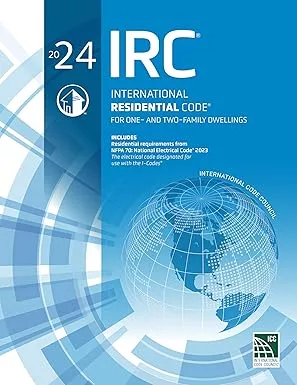U.S. private debt remains stable
Congressional banking legislation known as Glass-Steagall is verging on a comeback.

The private debt of America’s 325 million population has remained remarkably stable, even as the U.S. Treasury debt is coming under increasing criticism. The latter has doubled from $10 trillion at the beginning of the great financial crisis in 2008-2010 to an expected $20 trillion by the end of President Barack Obama’s second term in January 2017.
In fact, the nation’s cumulative personal debt, which reached in excess of 6% per capita during the 1990s, has seen a reversal to a near 5%-per-person surplus. While this places the United States just behind Japan’s 12% savings rate, it has become increasingly indicative of the personal debt fears that seem to have embraced America’s population.
Despite a lengthening period of all-time low interest rates, the American public seems to have developed an antipathy to getting stuck with a debt burden. Living beyond one’s means had become an increasing malady during the pre-financial crisis heyday, especially in new home-buying mortgages. This included not only larger homes and multiple automobiles, but also increased spending on digital technology for purposes of entertainment and to access the latest information.
While decreasing personal debt has stabilized individual prosperity, it also hampers the domestic consumer sector, which comprises two-thirds of the nation’s gross domestic product.
This prudence practiced by the American public, combined with an overall drop in exports, resulted in a relatively dormant gross domestic product growth. These factors led to an expanding unemployment concern as the current atmosphere of domestic insecurity encouraged further limitation of personal expenditures.
Commodity prices, especially those energy-related, festering at near multi-year lows have increased the public’s uneasiness with a disinflationary set of circumstances that has stymied wage increases as well as work opportunities.
As concerns with the presidential election outcome become ever more disturbing, current domestic economic circumstances are not expected to change for the rest of the year.
Glass-Steagall Act revisited
Congressional banking legislation known as Glass-Steagall is verging on a comeback. Passed by Congress in the early days of the Depression to separate commercial savings banks from freewheeling financial institutions, it was meant to restrict banks from engaging in unrestrained investments while keeping financial investment institutions from acting as banks to use individual customer savings for their more high-risk adventures.
The elimination of such a reasonable approach in the last days of the Clinton administration opened the door to the wild and wooly decade that culminated in the global financial crisis of 2008-2010. The Dodd-Frank legislation after the crisis restricted commercial banks’ wheeling-and-dealing opportunities and put them on a stricter regimen. The intent was to prevent lapses in judgment that had resulted in banks’ financial inventories being clogged with worthless mortgage-backed securities, which had brought on such a disaster.
The return of Glass-Steagall or similar legislation is unfolding in the platforms of both Democrats and Republicans. Both parties are making their case before the November election.
Although resisted by the ultra-conservative wing of the GOP, Republican presidential nominee Donald Trump favors this revival of separation between commercial and primarily investment-oriented institutions. He has embraced some of the strict investment regulations, which Dodd-Frank implemented with the Federal Reserve Board’s blessing.
Whether Glass-Steagall or similar legislation will be brought before a new president and Congress, along with retention of Dodd-Frank in its present form, remains to be seen. But with the leadership of both major political parties on board, it’s hard to see such legislation not being brought forth, early on in the new administration.
With the lengthy preliminaries that both the new Congress and administration will use to stabilize their solid footing in 2017’s early stages, however, it’s doubtful whether a new version of either law can be accomplished until the latter part of 2017, if then.
Purchasing power parity
When measuring the buying power of all retail, commercial and industrial goods in the currency of the country in which they are made available, a U.S. dollar interpretation of those numbers would be more realistic.
This method of product or service acquisition, known as purchasing power parity, often gives a distorted view of prices, especially in undeveloped or developing countries where the currencies tend to be weak. The comparison of these currencies with dollars, euros and yen tends to exaggerate the totality of gross domestic product of goods and services in the world rankings on an ongoing basis.
The most extreme example of this disparity is the government-managed currency of China (yuan), which is currently tied to the dollar on a six-to-one basis. This ratio has gone up and down in recent years, depending on whether import value or cheaper export pricing is Beijing’s preference at any point in time.
While the intent is not to diminish China’s economic growth outburst from 478 billion yuan in 1952 to 68 trillion in 2015, this would translate to one-sixth of that incredible volume in dollar terms. On the other hand, major European nations such as Germany, Britain and France have remained remarkably steady in gross domestic product evolution in either U.S. dollar or domestic terms in the past 50 years.
The Economist magazine’s Intelligence Unit, which projects national modest gross domestic product growth in U.S. dollar terms, warns of a major downturn in the United Kingdom’s purchasing power parity vs. the dollar in the next two years. This dramatic revision is based on the premise that the British pound’s value, which fell almost a third after June’s Brexit announcement, will not substantially recover. This would mean a boom for the U.K.’s exports but much costlier imports in the future. It will also indicate an upward trend in the relationship between the United Kingdom and United States.
While that final outcome is yet to be determined, it is almost a certainty that major changes are in store for the British import-export scenario and its pricing structures.
For future reference, all global nations’ GDP accomplishments always should be followed by a U.S. dollar amount in parentheses to present a true picture of their real total value.
Unemployment rate understated
A major problem in the monthly unemployment rate is it is generally misunderstood.
To the uninitiated, any number less than 5% seems to indicate a promising job picture, while the high single digits reflect an employment danger sign. The published percentage is limited to those previous full-time workers who register for unemployment compensation with the U.S. Department of Labor. America’s labor force is estimated at 160 million workers.
According to DOL, the actual number designated as unemployed is about 8 million. Approximately 95 million people are not in the active labor force, according to the Census Bureau. This number is made up of 53 million retirees older than 55 and 42 million people between the ages of 16 and 55.
The latter comprises insufficiently skilled, potentially trainable workers, and those officially unemployed, which amounts to 7.9 million, according to the government’s U3 report, which comprises the official unemployment rate. This is the percentage DOL reports monthly.
When broadening that number to the segment of those willing to work, but can’t match that desire with available job openings, the real unemployment rate would be close to 28 million trainable workers.
These figures are derived from the Organization of Economic Cooperation and Development. To sum up these numbers, the U3 is currently just below 5%. Those 8 million people are possibly looking for jobs but are covered by unemployment compensation in the meantime.
But the broadest unemployment indicated, including all the 28 million able to work full time but unemployed, would indicate a jarring 18% unemployment rate, a fact practically unknown to the U.S. public.
Looking for a reprint of this article?
From high-res PDFs to custom plaques, order your copy today!





